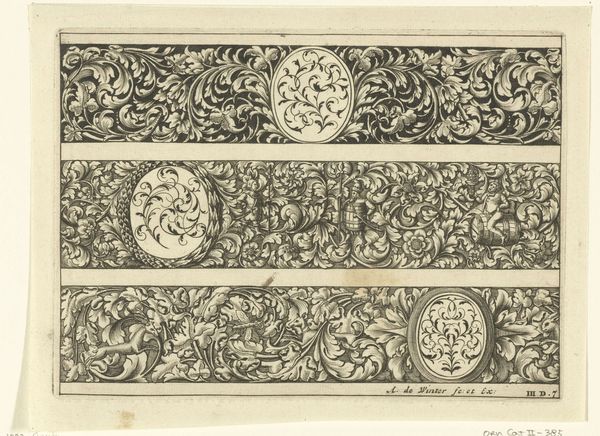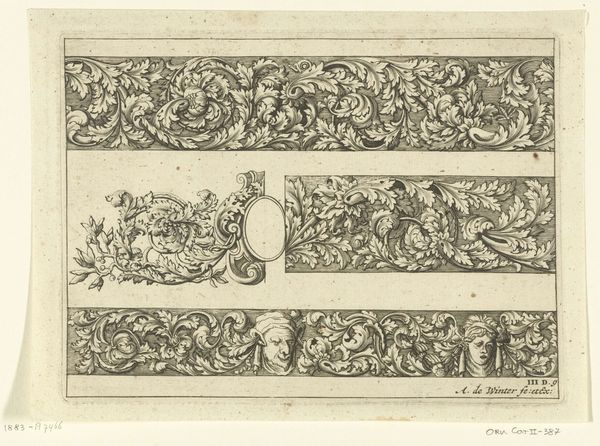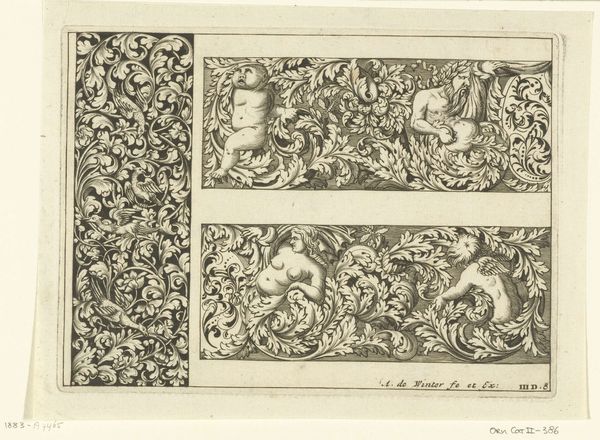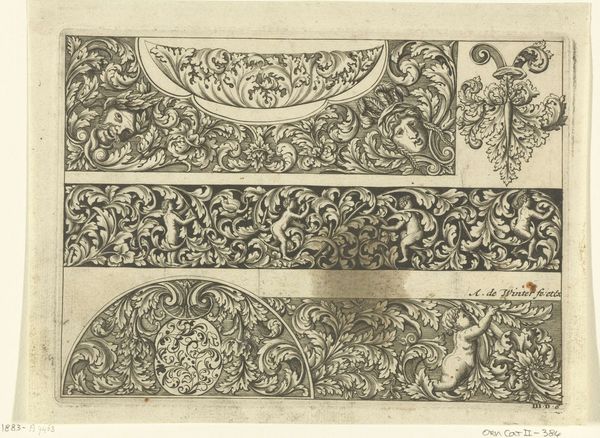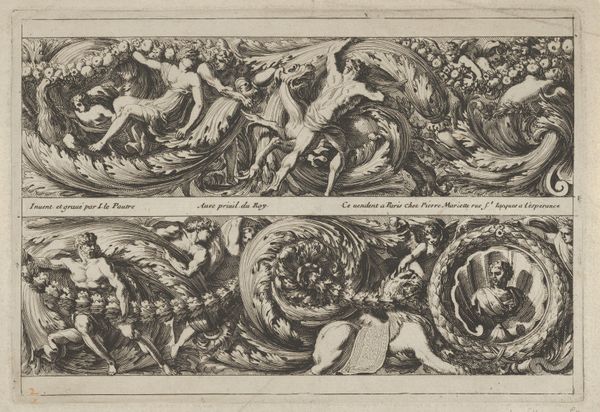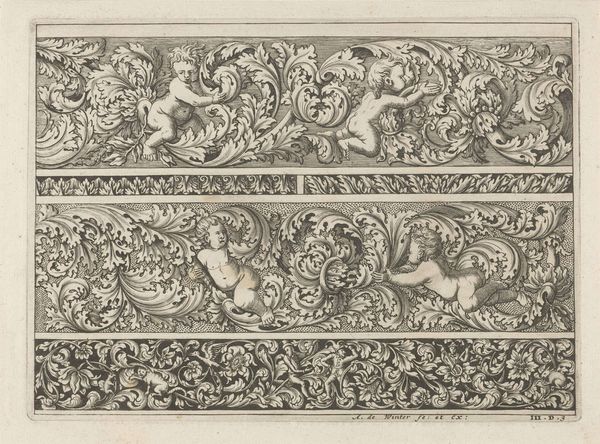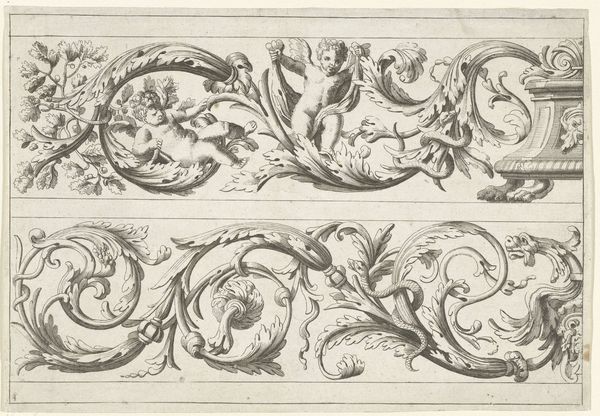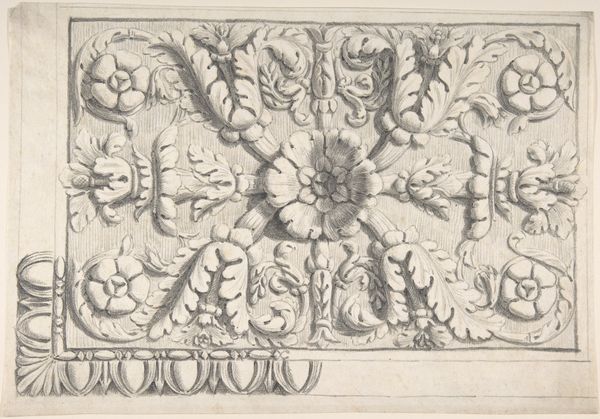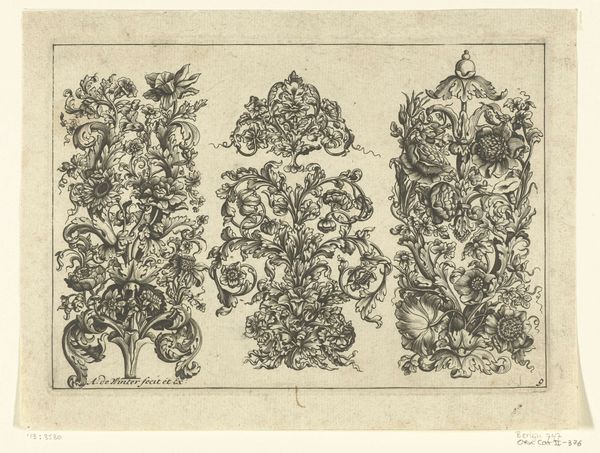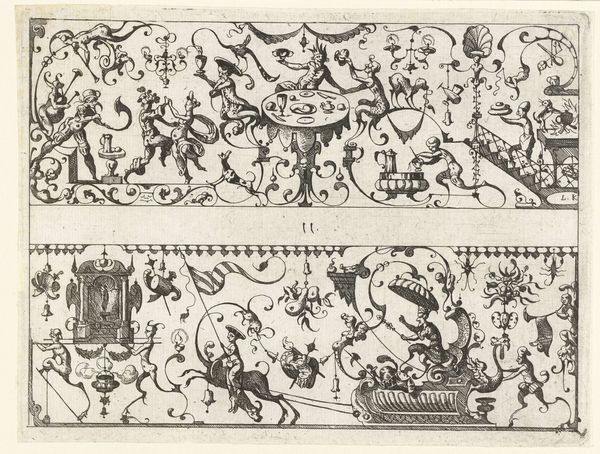
#
aged paper
#
toned paper
#
light pencil work
#
pen sketch
#
old engraving style
#
personal sketchbook
#
pen-ink sketch
#
pen work
#
sketchbook drawing
#
sketchbook art
Dimensions: height 137 mm, width 187 mm
Copyright: Rijks Museum: Open Domain
Editor: This is an intriguing pen and ink drawing titled "Drie friezen met bladranken," made around 1696 by an anonymous artist. It’s a set of three decorative friezes filled with leafy vines, almost like designs you'd see repeated on fabric or wallpaper. What strikes me most is the intricacy of the pen work – you can really see the labor involved in creating this. What do you see in this piece? Curator: I see a clear connection to the material conditions of art production in the late 17th century. These aren’t just abstract decorations; they’re examples of designs likely intended for larger-scale manufacturing, maybe wallpaper or even textiles, as you mentioned. Consider the labor invested. Someone meticulously crafted this, possibly to be replicated many times over. Do you see any evidence of the artist trying to optimize the design for easier reproduction? Editor: Well, the patterns do seem to repeat within each frieze, suggesting they could be easily extended. But how does the ‘craft’ aspect influence its status as art? Is it just a design sketch, or something more? Curator: That's a great question! It challenges our conventional art historical notions. Was the artist aiming for aesthetic value, or was the primary purpose practical, commercial? Either way, we shouldn't dismiss the technical skill, labor, and intention behind this piece. The “anonymous” tag is important here as well. Are we considering individual “artistic genius” or an artisan following accepted practices to create something functional and, ultimately, saleable? Editor: That’s interesting. I hadn't thought about how its potential use influenced its artistic merit or the role of the artist, thank you. Curator: Precisely! By exploring its materials, production, and purpose, we gain a richer understanding that transcends simple aesthetic appreciation.
Comments
No comments
Be the first to comment and join the conversation on the ultimate creative platform.
